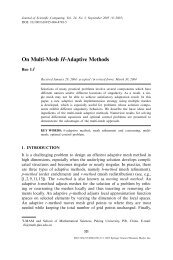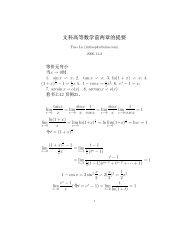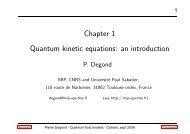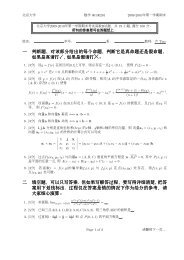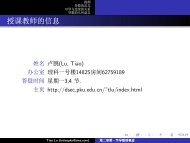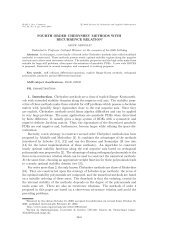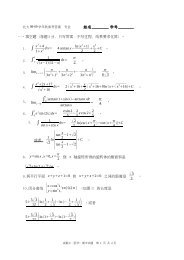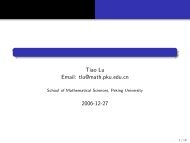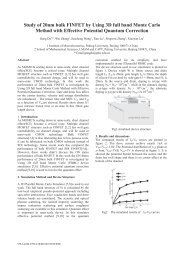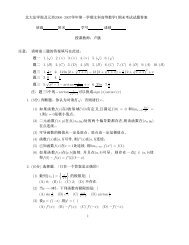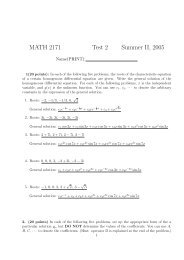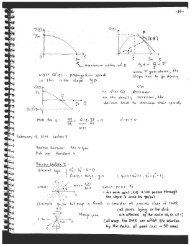Abstract
Abstract
Abstract
You also want an ePaper? Increase the reach of your titles
YUMPU automatically turns print PDFs into web optimized ePapers that Google loves.
CHAPTER 2. TEMPORAL INTEGRATION 32<br />
2.2 Newton-Krylov Methods<br />
To solve the nonlinear equations that come from the implicit integrator and in finding<br />
the equilibrium Wigner distribution, f0, on different grids, we use Newton’s method.<br />
Given a nonlinear equation F : R M → R M and an initial iterate z0, Newton’s method<br />
is an iterative method that finds a root of F , that is find z ∗ ∈ R M such that F (z ∗ )=0,<br />
by the iteration:<br />
zm+1 = zm − F ′ (zm) −1 F (zm) =zm + sm<br />
where F ′ (zm) is the Jacobian of F at zm. The Newton step, sm, is then the solution<br />
of the linear equation:<br />
F ′ (zm)sm = −F (zm)<br />
Before we cite the convergence theorems of Newton’s method, we first want to<br />
define two types of convergence, q-linear convergence and q-quadractic convergence.<br />
A sequence {zm} ∈R M converges to z ∗ q-linearly if the sequence converges to z ∗ ,<br />
and there exists a constant C>0 such that zm+1 − z ∗ ≤Czm − z ∗ . A sequence<br />
{zm} ∈R M converges to z ∗ q-quadratically if the sequence converges to z ∗ ,andthere<br />
exists a constant C>0 such that zm+1 − z ∗ ≤Czm − z ∗ 2 .<br />
The standard assumptions [19] for this problem are:<br />
• There exists a solution z ∗ ∈ R M .<br />
• The Jacobian F ′ (z) is Lipschitz continuous




